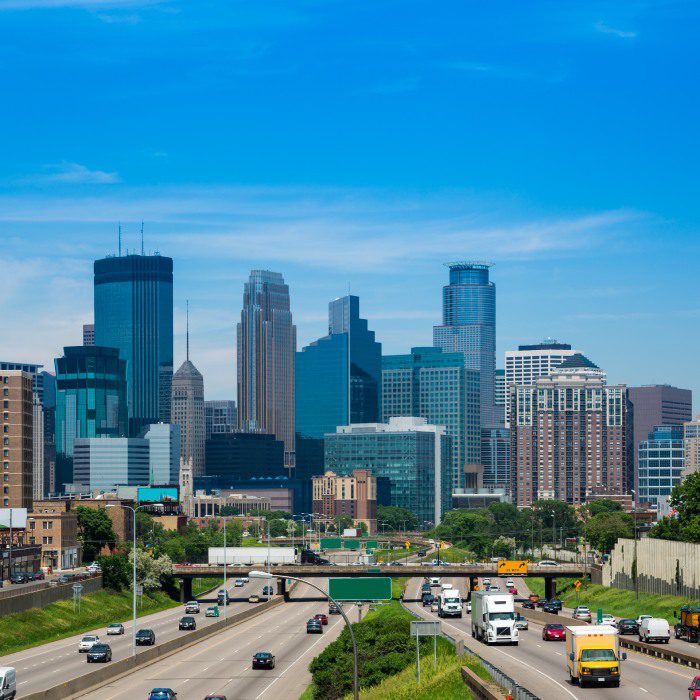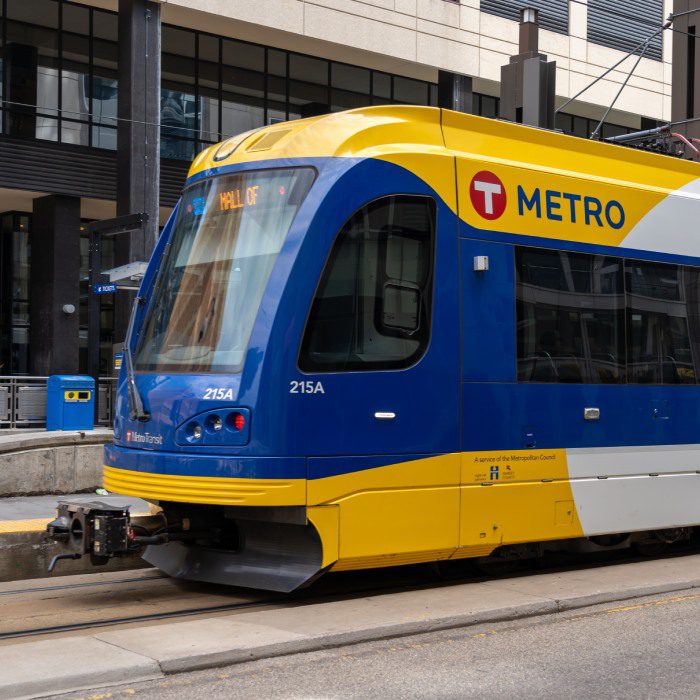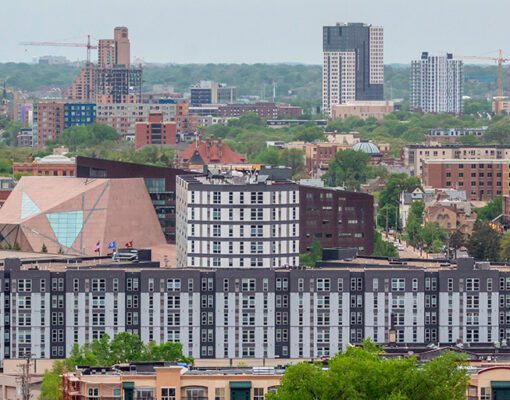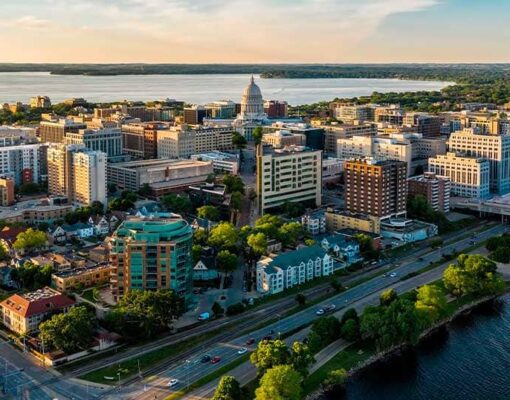
Minneapolis vs St. Paul: Which City Is Right for You?
June 17, 2024
If you are moving to the Twin Cities area of Minnesota, you have a choice to make: Minneapolis or St. Paul? Before you choose, explore the differences between these two cities. The lifestyle, cost of living, and history of each make them unique places to live. Which one fits you the best?
Minneapolis vs St. Paul: Location and History

There is only a distance of 11 miles between Minneapolis and Saint Paul. They are nestled together in the southeastern part of Minnesota, right where the Mississippi River meets the Minnesota River. Practically next-door neighbors, Minneapolis sits on the west bank of the Mississippi, while Saint Paul occupies the east bank.
The location itself does not cause drastic differences between the cities. Both enjoy access to the river for recreation and transportation, and they share a similar climate. However, there are some subtle variations:
- Minneapolis has a flatter landscape with some lakes scattered throughout. Saint Paul is built on bluffs overlooking the Mississippi, which creates a more hilly terrain.
- Minneapolis has a more modern downtown feel with a prominent business district. Saint Paul boasts a historic charm with Victorian architecture throughout many neighborhoods.
The slightly older feel of St. Paul is also attributed to the history of both cities. Saint Paul was founded in 1854, while Minneapolis wasn’t officially established until 1867. This 13-year difference contributes to the slightly different feel of the two cities.
Lifestyle
While not radical, there are certain differences in the lifestyle of both cities.
Saint Paul is more laid-back, family-oriented, and community-driven. It has a strong sense of history and a slower pace of life compared to Minneapolis. Think charming neighborhoods with tree-lined streets and friendly faces.
Minneapolis, on the other hand, is more energetic, youthful, and fast-paced. It has a bustling downtown with a vibrant nightlife scene and a fast-paced atmosphere. Think trendy restaurants, rooftop bars, and a constant buzz of activity.
While fast-paced, Minneapolis’s lifestyle is termed “manageable.” Locals staying in the city don’t feel overwhelmed like they do in New York or Houston. You have the big-city amenities minus the overwhelming chaos.
When it comes to nightlife, Minneapolis takes the lead. The city offers a wide range of options, from trendy nightclubs and live music venues to sports bars and craft breweries. There’s something for everyone, and the energy stays high late into the night. St. Paul is not as lively once the sun goes down, but you will find a good selection of pubs, breweries, and restaurants to enjoy.
Cost of Living

There isn’t much difference between the two cities when it comes to the cost of living. The cost of living in Minneapolis is around $4,301 for a family of four per month, excluding rent. The same figure is approximately $1,189 for a single person. The rent is in the range of $1,000-$1,500 per month, depending on the neighborhood and property.
You can expect similar figures for Saint Paul. Overall, the expenses are 10% lower than the national average, and the median rent is around $1,235.
Please note that the neighborhood you stay in will impact the cost of living the most. Loring Park, Fulton, and Linden Hills are some of the most sought-after neighborhoods in Minneapolis. So, they attract higher rental values and overall expenses. Likewise, Macalester, Highland Park, and Como Park are considered upscale, and therefore more expensive, neighborhoods in Saint Paul.
Economy and Job Market
The job markets in Minneapolis and Saint Paul are both strong, but there are some nuances to consider depending on your field.
Between the two cities, Minneapolis offers better employment opportunities. The city has always been an economic center. The natural waterfall, Saint Anthony Falls, provided a powerful source of energy, attracting settlers in the mid-1800s. The abundance of timber in the surrounding area also fueled the lumber industry in Minneapolis, further boosting its economy.
Today, the city boasts a strong and diverse economy. The largest employers in Minnesota include Target, Best Buy, Mayo Clinic, and United Health Group. Besides that, there are several small businesses hiring constantly year-round. The unemployment rate of 2.6% in April of 2024 is lower than the national rate.
While Saint Paul has relatively fewer opportunities, you will find ample available jobs nevertheless. Manufacturing, retail, and healthcare are the top-performing sectors in the city, and the government also hires from time to time..
Transportation

If you are a regular commuter, then you should know about the state of transportation in the Twin Cities. Both Minneapolis and Saint Paul offer a good mix of transportation options.
The Twin Cities are served by a robust public transportation system called Metro Transit. It includes light rail lines (Blue Line and Green Line), a network of buses with frequent routes, and commuter rail (Northstar) connecting to surrounding suburbs.
Given its relatively greater size and denser downtown core, Minneapolis has a slight edge in terms of the sheer number of bus routes and light rail stops.
Additionally, both cities have similar traffic patterns, with congestion concentrated during peak hours. Owning a car provides more flexibility, but parking can be expensive in downtown areas. However, locals have reported that Minneapolis has its fair share of infrastructure and traffic woes. You should expect traffic jams and delays, especially in peak hours.
That being said, Minneapolis is one of the most bike-friendly cities. There are lanes created specifically for bikers, and the locals take biking seriously.
Crime Rate
Minnesota is not among the most dangerous states, but it does rank 29th most dangerous in the US.
Minneapolis has a total crime index of 1, which means it is among the 1% safest cities in the US. The city sees 12.45 violent crimes per 1,000 residents, which is alarmingly higher than the state-wide rate of 2.81 violent crimes per 1,000 residents.
Saint Paul received a violent crime rate index of 3, which makes it among the 3% safest cities in the US. Its 7.02 violent crimes per 1,000 residents is lower than that of Minneapolis.
As with many big cities, crime rates can vary from neigbhorhood to neighborhood. Regardless of which city you choose, make sure you select a neighborhood with a low crime rate and a reputation for safety to ensure peace of mind during your time in Minnesota.
Minneapolis or St. Paul?
So, which of the two cities should you move to?
Unfortunately, there isno single answer as to which city, Minneapolis or Saint Paul, is definitively better for you. Both /.are more similar than they are different. It ultimately boils down to your needs, preferences, expectations, and aspirations.
If possible, schedule a visit to both Minneapolis and Saint Paul to get a feel for their unique atmospheres. Walk around different neighborhoods, experience the nightlife, and see which city resonates more with you.
To conclude, Minneapolis is preferred by those who desire a more vibrant lifestyle. Saint Paul is more for laid-back folks who desire a community-oriented vibe.
That said, whether you are moving to Minneapolis or St. Paul, Piepho Moving & Storage is here to facilitate an effortless move. Contact us today for a free moving quote and expert advice.




